ASEXUAL REPRODUCTION IN MOSSES
The complete moss life cycle, where both the gametophyte and sporophyte stages are present, involves combining genetic material equally from two parents. This occurs when a sperm fertilizes an egg inside an archegonium on the female gametophyte, ultimately developing into a sporophyte. Thus it is a sexual reproductive process. However, many mosses often reproduce asexually, either in addition to the sexual process involving spores, or as the only means of effecting multiplication and dispersal. In asexual reproduction, fragments of a gametophyte plant are shed, and the fragments form into new plants that are genetically identical to the original.
Some mosses manage to be well established despite a total absence of both sporophytes and specialized asexual structures, reproducing by simple fragmentation of normal leaves, branches, or stems. However, most obviously asexually reproducing mosses do so by means of special “brood bodies.” There are two general types of brood bodies: (1) gemmae, which are are quite small, composed of just one or a few cells arranged in clusters or filaments, and ; (2) propagules, which are larger than gemmae,consisting of reduced buds or branches that break off to form new plants.
Gemmae
Syntrichia papillosa (in the family Pottiaceae) is a broad-leaved acrocarp (cushioin moss) that grows in dense colonies, often mixed with Orthotrichum, on tree bases and low brick walls. Here in North America the species is entirely asexual, reproducing by means of tiny globular gemmae that are clusters of just a few cells each, abundantly produced on the upper surface of the leaf, along the costa (midvein).
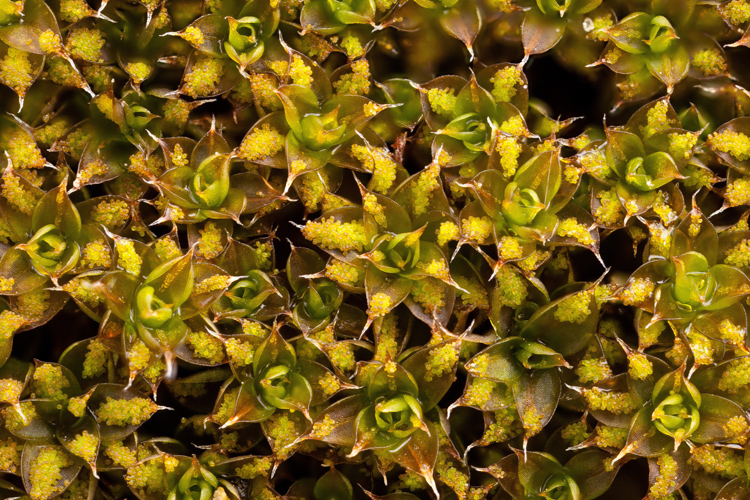
Syntrichia papillosa is a broad-leaved cushion moss that reproduces by
means of globose gemmae abundantly produced along the costa.
A second species of Syntrichia is much less frequent in Ohio, but can be found in the same situations as S. papillosa, indeed often growing with it. This is Syntrichia laevipila, distinguished by gemmae that are leaf-like.
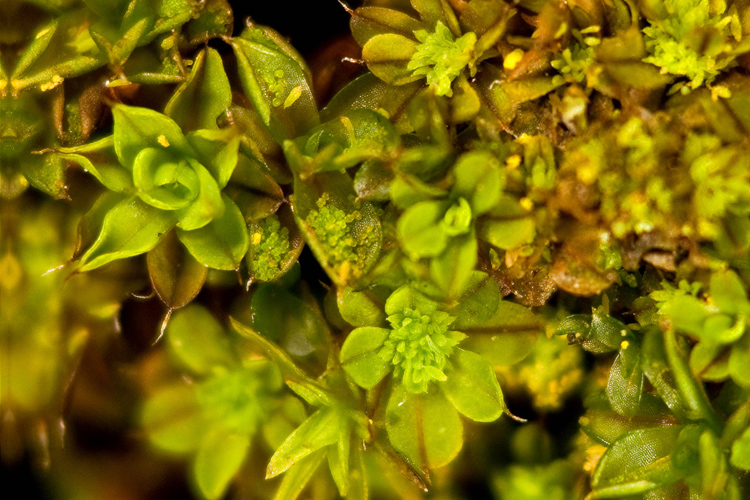
The gemmae of Syntrichia laevipila are leaf-like.
A few member of the genus Orthotrichum, which also reproduce sexually, produce gemmae that consist of short chains of a few cells, produced on the surfaces of leaves. These are barely visible with the naked eye, and are best seen through a microscope.
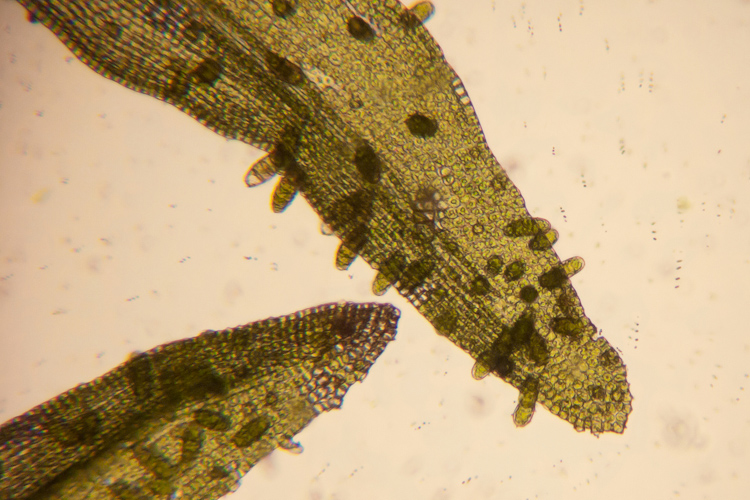
Few-celled gemmae on the leaves of Orthotrichum obtusifolium, microscope view.
Some mosses produce cute little potato-like subterranean rhizoidal tubers. These are barely visible with the naked eye, and are best seen through a microscope.They are especially common in the genus Gemmabryum, recently segregated from Bryum.
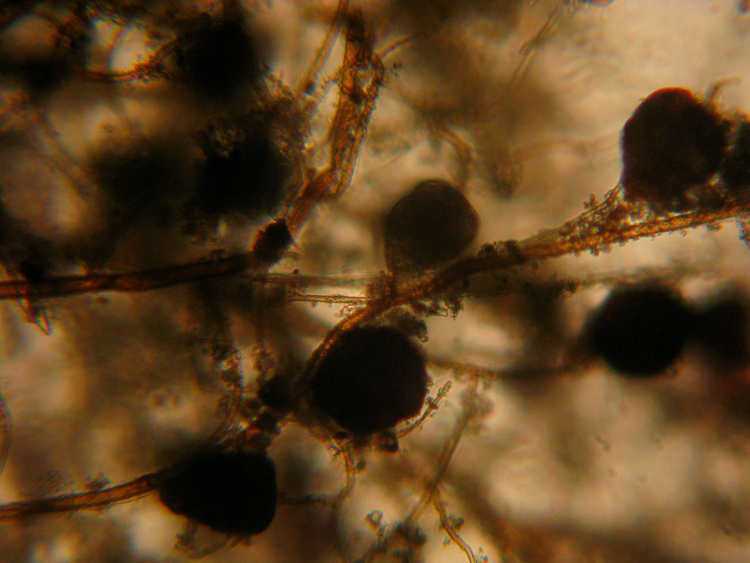
Rhizoidal tubers of Gemmabryum, microscope view.
Propagula
Propagula are reduced buds or branches that break off to form new plants. They are often located at stem tips and/or in the axils of leaves. Platygyrium repens is an otherwise indistinctive carpet moss (pleurocarp) that grow on moist logs. The clusters of reduced stems give it a “bushy-headed” appearance, quite cute.
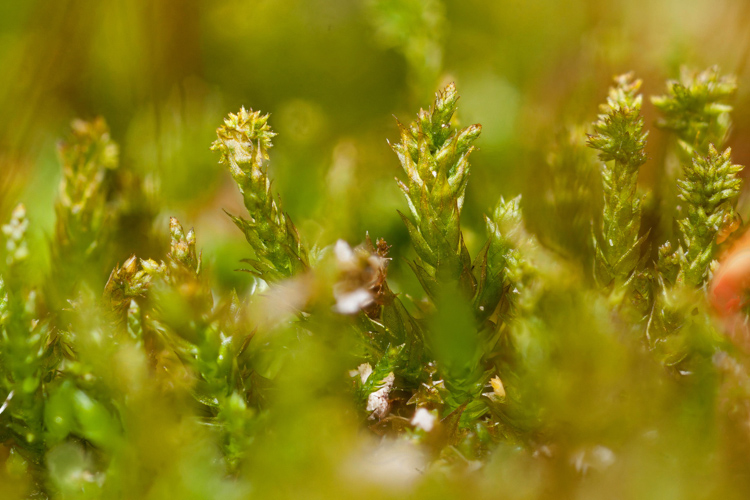
Platygyrium repens bears dense clusters of brood branches in the uppermost leaf axils.
Through a microscope, the structure of the propagules of Platygyrium, as short leafy branches, is more evident. Similar branchlets are formed by an acrocarp of disturbed soil in woodlands and streambanks, Pohlia annotina.

Propagula in the form of miniature stems on two common mosses.
Brothera leana is an uncommon moss of moist shady sandstone cliffs. A slender and narrow-leaved acrocarp, it would be very difficult to tell this apart from several others, such as Dicranella or Ditrichum were it not for the very dense clusters of slender propagula in the upper leaf axils. Brothera looks like it’s encouraging the other mosses, waving pom-poms. Let’s call Brothera “cheerleader moss”!
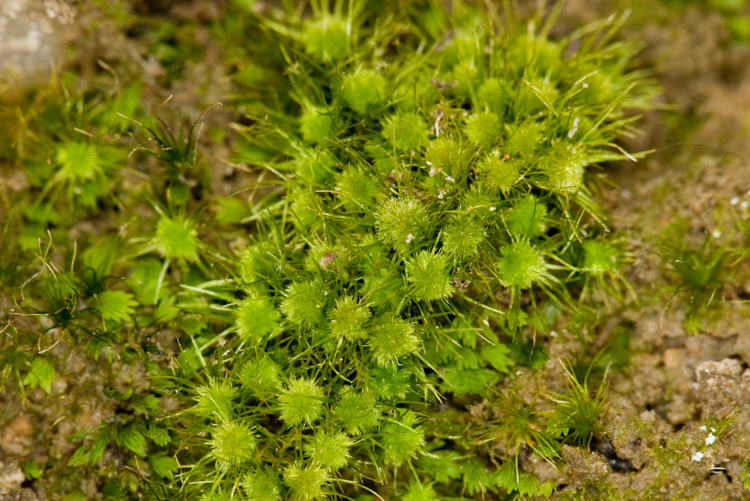
Brothera leana is waving pom-poms!
Several members of the narrow-leaved acrocarp genus Dicranum produce distinctive brood branches. Especially conspicuous are those of D. flagellare, consisting of upright branchlets that overtop the regular vegetative ones, but that bear reduced scale-like appressed leaves.
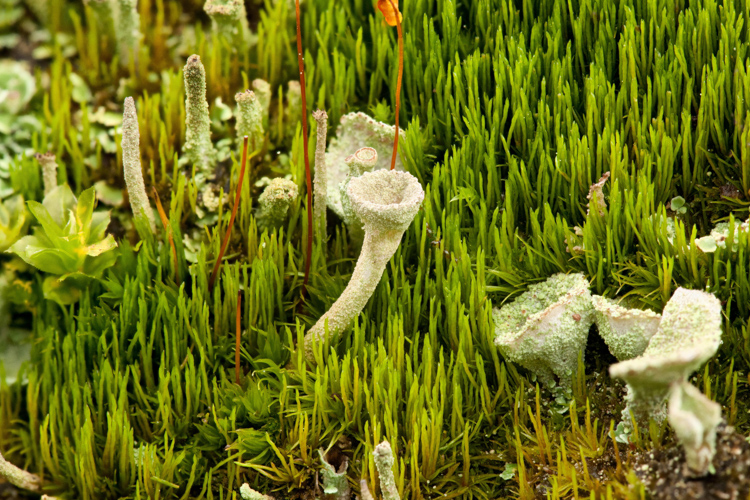
Dicranum flagellare bears long, upright, sword like brood branchlets.
Located at the tips of the upright stems, and expanded at their tips, the propagula of Aulocomnium palustre could be mistaken for sporophytes. Closer examination shows the leaf-like appendages that fall off to form new clones. (Note: A. palustre also reproduces sexually.)
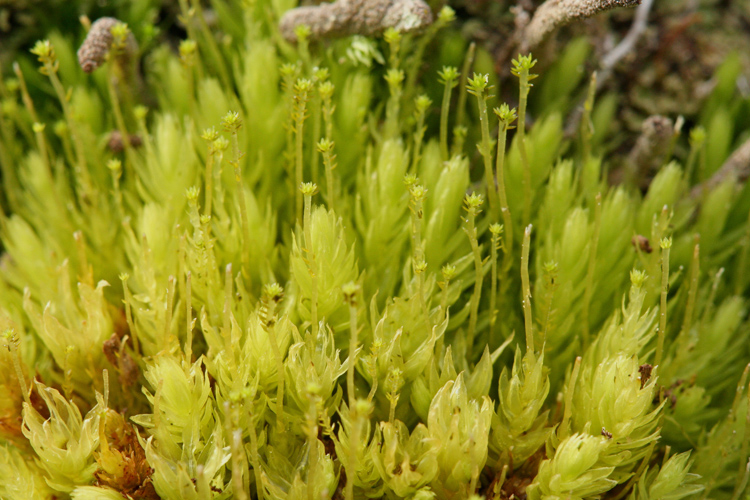
The propagula of Aulocomnium palustre superficially resemble sporophytes.
